Regulation and Compilation
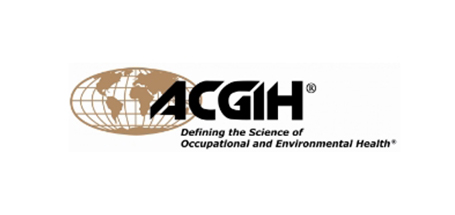
ACGIH-American Congress of Government Industrial Hygienists
The American Conference of Governmental Industrial Hygienists (ACGIH) is a 501(C) scientific organization that is dedicated to advancing and improving industrial hygiene. They encourage the interchange of experience from industrial hygienists to collect and disseminate information to organization members.
They publish numerous publications including an annual publication on Threshold Limit values (TLV’s) and Biological Exposure Indices (BEI’s). These are recommendations for exposures to various contaminates. They are not standards or regulations, but safe guideline levels established by a knowledgeable body on what safe levels of exposure are without health concern. Because these values are based solely on health factors no consideration is given to economic or technical feasibility.
The ACGIH had also publish The Guide for Recommended Industrial Ventilation practice which assists industrial ventilation designers on applying applications and calculations. Industrial ventilation design is the most important aspect of implementing a dust collection system. Pressure loss calculations are required to determine a suitable fan for the dust collection system.
Important considerations when designing a dust collection system that have an impact in the pressure loss calculations include;
- Establishing the capture velocity to capture and contain the contaminate.
- Establish the hood pressure loss – how much energy is required to maintain CFM.
- Establish pressure losses through elbows, duct, flex hose, branch entries and more.
- Knowing the pressure loss through the dust collector and filters, abort gates or exhaust outlets.
- Density correction for heat, moisture and elevation
Dust collection systems that are not designed properly can have underpowered fans that may cause issues such as:
- Not allowing enough air into the system to capture and contain the contaminate.
- Not having enough air to move the contaminate through the duct to the collector.
Poorly designed systems can lead to the accumulation of dust in the duct system. If you’re working with explosive dust this becomes an even bigger concern. Industrial ventilation design experts at Clean Air Company have undergone intensive industrial ventilation design courses to ensure your dust collection system is designed property for efficiency. We recommend third party air balancing tests to verify our designs compliance with our proposed recommendations. Designing your dust collection system to work effectively and efficiently is our primary concern.
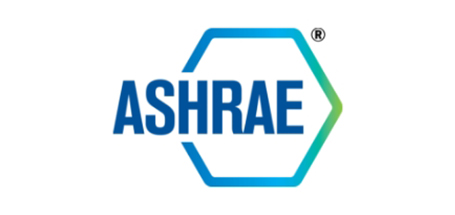
The American Society of Heating, Refrigeration, and Air Conditioning Engineers (ASHRAE)
ASHRAE is an organization whose mission is “To serve humanity by advancing the arts and sciences of heating, ventilation, air conditioning, refrigeration and their allied fields.”
They do scientific research to help develop standards that can than be adopted as code. While most of the standards developed are for the refrigeration, heating and cooling industries some are important for dust collection system design.
When designing your dust collection system, we will evaluate and consider the type of dust we are collecting. We want to know
- Is the dust explosive?
- Is the dust hydroscopic (will it adsorb moisture)?
- Is the dust abrasive?
What is the size and shape of the dust particle measured in microns (um)?
These questions will help us determine the right filter media for your dust collector. The ASHRAE 52 Standard gives us guidelines for how efficient a filter is, based on a range of particle sizes. The efficiency of the filter is given a Minimum Efficiency Rating Value (MERV) based on how it performs during the ASHRAE test. MERV ratings go from 1 – 20 with 20 being the most efficient at removing particles in the submicron range – .3 um.
For example, if we are designing a wood dust collection system, we know that wood dust is explosive and the average size of wood dust particles is between 5 – 30 microns (um). The particle size will vary based on the tool creating the dust. Routers generate larger particles than sanding operations and smaller particles, which tend to be more explosive. If we have a small operation generating larger size dust particles, we may want to use a cyclone collector to remove the larger particles to ensure there is no filter replacement cost and exhaust directly outdoors. However, a large woodshop may be expensive to exhaust the air outside regularly.
We use a dust collector that has filter media tested by ASHRA Standard 52 to remove 90% of the dust particle in the size range of 5 – 30 microns. With that said, we would select a filter with a MERV rating of 15. We also know that the codes states if we are returning the air back into the building, the air must be 99.9% free of dust particles 10um or larger. This means we need a secondary filter with a minimum MERV rating of 17. Based on the ASHRAE test protocol, we now know the filters are capable of achieving our design criteria.
Filter manufacturers receive a certificate, after they have submitted their filters to a testing laboratory, stating the test results of their filter and what MERV rating it receives. This is import for engineers and end users to have this certificate as part of the verification of the design. The data on this sheet also indicates the air volume the filter is rated for. Over loading a filter, or increasing the air to cloth ratio, can lead to design problems with your dust collection system.
Other ASHRAE standards useful in our industry include Standard 41.2 for measuring airflow and air velocity. Testing procedures to validate air flows are important to ensure material does not accumulate in the duct system. Clean Air Company recommends using a company certified in air balancing to verify our system designs. Companies certified in air balancing will comply with the ASHREA standard.
Links:
www.ashrae.org
www.aabc.org
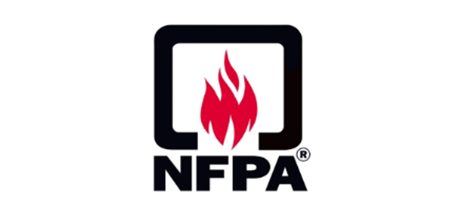
National Fire Protection Association (NFPA)
The National Fire Protection Administration (NFPA) utilizes people segmented in various committees to develop standards which sometimes are adopted as code based on their area of expertise.
For example NFPA 1500 is a standard requirement on Fire Department Occupational Safety & Health. Its committee members are comprised of fire officials, insurance companies, professors, manufactures, and health and safety companies. This particular protocol requires fire departments to protect their firefighters from breathing diesel exhaust. This is a requirement for fire departments to consider but the actual code that addresses vehicle exhaust systems is the International Mechanical Code (IMC).
There are many standards that are important to be familiar with. When designing dust collection systems, there are more to follow, particularly when dealing with explosive dusts. The difficulty is understanding which standard to use. For example, 664 will assist in designing a wood dust collection system but it will also cross references 68 for deflagration venting and 652 for combustible dust. Some of the standards applicable to dust collection include but are not limited to;
- 68 – Deflagration venting
- 484 – Standards for Combustible Metals
- 652 – Fundamentals of Combustible Dust
- 654 -Explosions from Manufacturing Processing, and Handling of Combustible Particulate Solids
- 664 – Prevention of Fires and Explosions in Woodworking Facilities
Ultimately, the compliance of a dust collection system design for explosive dust is determined by the Authority Having Jurisdiction (AHJ) which is your local code enforcement official. Permits should be applied and plans must be reviewed before proceeding with the installation.
Clean Air Company can assist you with guidelines on which standards will govern your design as well as provide all the necessary documentation needed for a dust collection permit application.
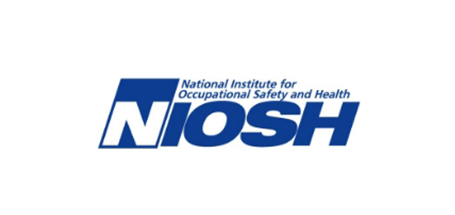
National Institute For Occupational Safety (NIOSH)
The National Institute for Occupational Safety & Health (NIOSH) was established under the Occupational Safety & Health Act of 1970 as a research entity to develop safe and healthy workplaces. NIOSH is part of the Centers for Disease Control (CDC) and has a current focus on reducing occupational cancer and occupational respiratory disease among other things.
In 1989 the Current Intelligence Bulletin #50 was published to reveal the carcinogenic effects of breathing diesel exhaust and the various industries most impacted by the revelation. Since then the hazards of breathing diesel exhaust have led to codes and standards changing. NFPA 1500 now requires firehouse’s to install source capture exhaust systems to protect living and sleeping quarters. Vehicle maintenance facilities are required by the International Mechanical Code to have source capture vehicle exhaust systems to protect from exposure. Laws regarding presumed cancer contraction have assisted firefighters to receive medical benefits as a result of the studies documenting the high risk of cancer among firefighters.
NIOSH has also published information on the hazards of welding fume. They are currently recommending exposure to Manganese, a by-product of welding fume, be reduced from its current OSHA PEL of 5 mg/m3 to 1 mg/m3. This is still greater than the ACGIH recommended TLV of .02 mg/m3 . The important thing to take note of is that both the NIOSH and ACGIH recommend a reduced exposure limit.
The continued research by NIOSH on the hazards of welding fume might follow the same historical pattern of past hazardous contaminates researched such as exposure to cigarette smoke, asbestos and diesel exhaust. They reduced exposure limit of welding fumes is not a matter of whether it will be reduced, but a question of when it will be reduced.
When designing industrial ventilation systems, it’s important to see what the current NIOSH research reports. This allows us to design potential future government mandated changes into the system. If you’re a company doing lots of welding, you will either have a welding fume extraction system or are researching purchasing one. You should factor in potential regulatory changes now to avoid repetitive costs later. Today you might have met the current OSHA standards of 5mg/m3 . In 3 years, due to the result of NIOSH research and recommendations that PEL’s could be lowered, will you still be compliant?
Silica dust, chemical dusts, wood dusts and other contaminants that NIOSH researches and issues publications on, aims to educate people on the work hazards they potentially face. CDC publishes a pocket guide for chemicals indexed A – Z that provides you with information on the chemical formula, its conversion into milligrams per cubic meter, current and proposed permissible exposure values among other things.
Clean Air Company believes educating our customers on current codes and regulations as well as current research are part of the evaluation on designing your dust collection system.

International Mechanical Code (IMC)
Establishes minimum regulations for mechanical systems using prescriptive and performance-related provisions.

Public Employees Occupational Safety and Health (PEOSH)
TPublic Employees Occupational Safety and Health (PEOSH) develops and enforces occupational health standards for public employees, and encourages employers and employees to work safely.
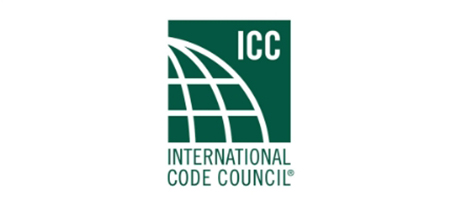
International Code Council (ICC)
The International Code Council is a nonprofit association that provides a wide range of building safety solutions including product evaluation, accreditation, certification, codification and training. It develops model codes and standards used in the industry.
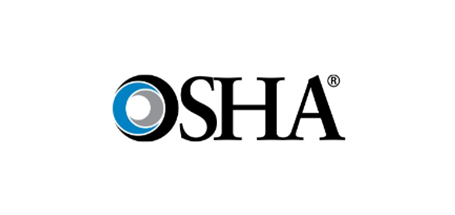
Occupational Safety and Health Administration (OSHA)
OSHA is part of the United States Department of Labor. The administrator for OSHA is the Assistant Secretary of Labor for Occupational Safety and Health. OSHA’s administrator answers.

